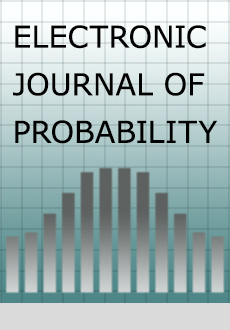Abstract
To understand the effect of assortative mating on the genetic evolution of a population, we consider a finite population in which each individual has a type, determined by a sequence of n diallelic loci. We assume that the population evolves according to a Moran model with weak assortative mating, strong recombination and low mutation rates. With an appropriate rescaling of time, we obtain that the evolution of the genotypic frequencies in a large population can be approximated by the evolution of the product of the allelic frequencies at each locus, and the vector of the allelic frequencies is approximately governed by a diffusion. The same diffusion limit can be obtained for a multilocus model of a diploid population subject to selection. We present some features of the limiting diffusions (in particular their boundary behaviour and conditions under which the allelic frequencies at different loci evolve independently). If mutation rates are strictly positive then the limiting diffusion is reversible and, under some assumptions, the critical points of the stationary density can be characterised.
Citation
Alison Etheridge. Sophie Lemaire. "Diffusion Approximation of a Multilocus Model with Assortative Mating." Electron. J. Probab. 16 2122 - 2181, 2011. https://doi.org/10.1214/EJP.v16-932
Information





